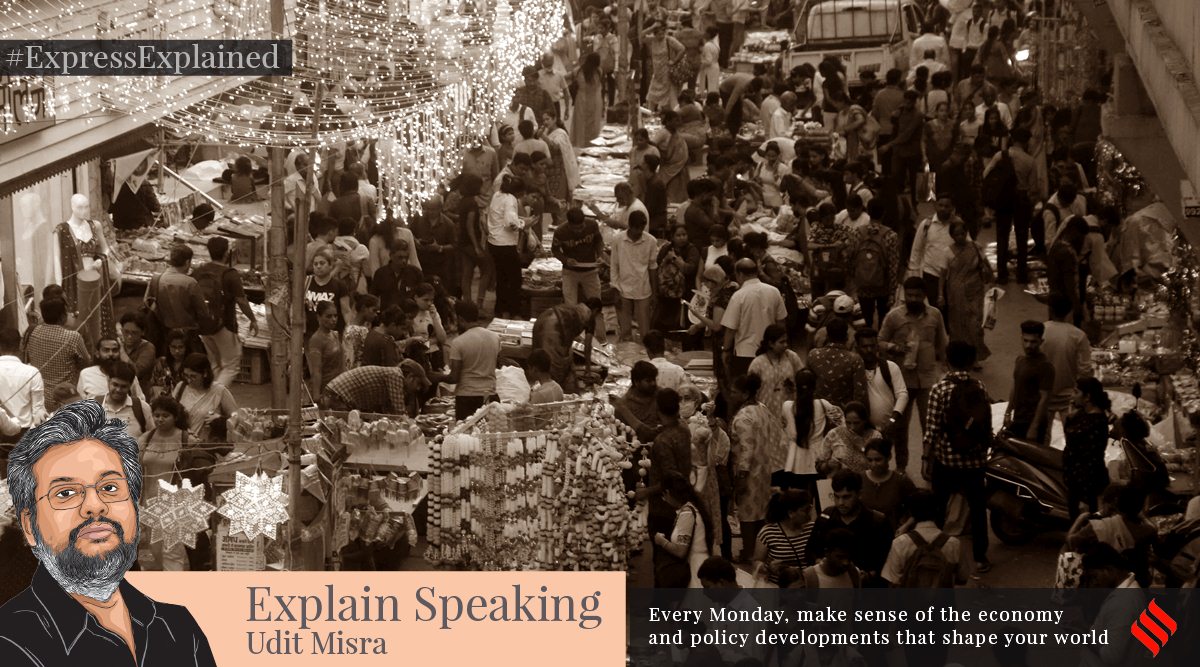Judah’s Limerick
The New Story
ExplainSpeaking | Is India reverting to the Hindu rate of growth?
Raghuram Rajan said, “At this point, the average annual growth of the October-December quarter relative to the similar pre-pandemic quarter 3 years ago is 3.7%. This is dangerously close to our old Hindu rate of growth! We must do better.”
New Delhi | Updated: March 7, 2023 07:45 IST

On Sunday, PTI reported that former Reserve Bank of India Governor Raghuram Rajan feels India is “dangerously close” to the “Hindu rate of growth”. Rajan was reportedly responding to the latest GDP data released by the government. According to the PTI report, he stated that the sequential slowdown in the quarterly growth, as revealed by the latest estimate of national income released by the National Statistical Office (NSO) last month, was worrying.
The data in question pertains to India’s GDP growth in the third quarter (October to December, 2022) of the current financial year (2022-23). You can read a detailed explanation on it by clicking here. A key takeaway was that India’s GDP grew at just 4.4% in the quarter ending December 2022.
Who coined the phrase Hindu rate of growth?
The first thing to know is that contrary to what many readers might believe, the term “Hindu rate of growth” has been in use in India’s economic history literature since 1982 when an Indian economist, Raj Krishna, coined it. To be sure, Krishna was not someone who aligned with the ideologies of the Congress-led governments of that time.
“Chicago-trained and, in the political climate of the time, with a reputation for being somewhat of a right-winger, he (Krishna) was perhaps a more acute observer of the Indian economy than most of his peers,” states Pulapre Balakrishnan, professor of economics at Ashoka University, in his piece titled “The recovery of India: Economic growth in the Nehru era”.
During the Emergency, Krishna was teaching at the Delhi School of Economics. After the Indira Gandhi government was ousted in 1977, he became a member of the Planning Commission under the Janata Party government. During his tenure, the Commission wrote the draft Sixth Five Year Plan. Concurrently, he was also a member of the Seventh Finance Commission responsible for the disbursement of funds to the states.
So what was Raj Krishna trying to convey when he used the term “Hindu rate”?
In 1979, he resumed teaching at the Delhi School and stayed there until his death in 1985. According to The New Oxford companion to Economics in India (OUP), it was “during this period that he coined the memorable phrase ‘The Hindu Rate of Growth’, a polemical device intended to draw attention to the meagre 3.5 per cent growth rate experienced by India over the long run. The fact that this rate of growth remained steady through changes in governments, wars, famines, and other crises, made it for him an inherently cultural phenomenon—hence the name”.
In other words, the term Hindu was not used to denigrate the Hindu community.
______________________________________________________________